The Oswestory
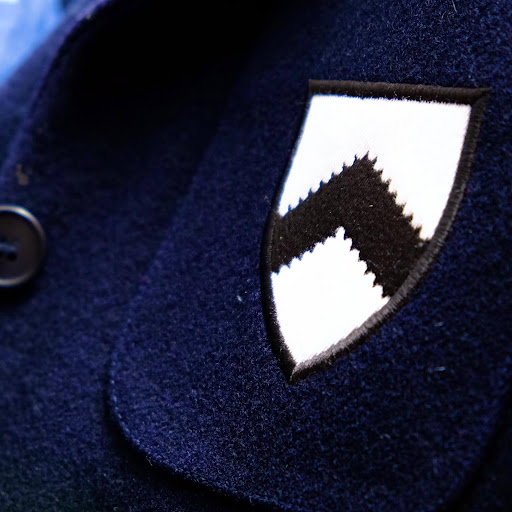
A Family crest for a Family School.
Our foundation as a truly independent school, free from ties to either monarchy or church, was the pioneering vision of our founder David Holbache. The school continues to proudly wear the crest of the Holbache family as its badge; a family crest for a family school.
Oswestry through the ages
On the far-western edge of the Shropshire plain, nestling up against the foothills of the Welsh mountains, lies a school with a unique and very special history.
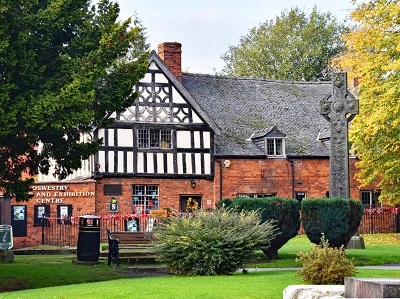
1400
Oswestry pupils are educated in a half-timbered school building in the grounds of the Parish Church of St Oswald’s. They are schooled principally in Latin, Greek and English Grammar.
1407
Oswestry School is founded by David Holbache and his wife Guinevere; the second oldest truly independent school in the country.
1500 — 1600
Oswestry School attracts the attention of Queen Elizabeth I who pledges an endowment of “40 shillings per annum” to assist with the running of the school.
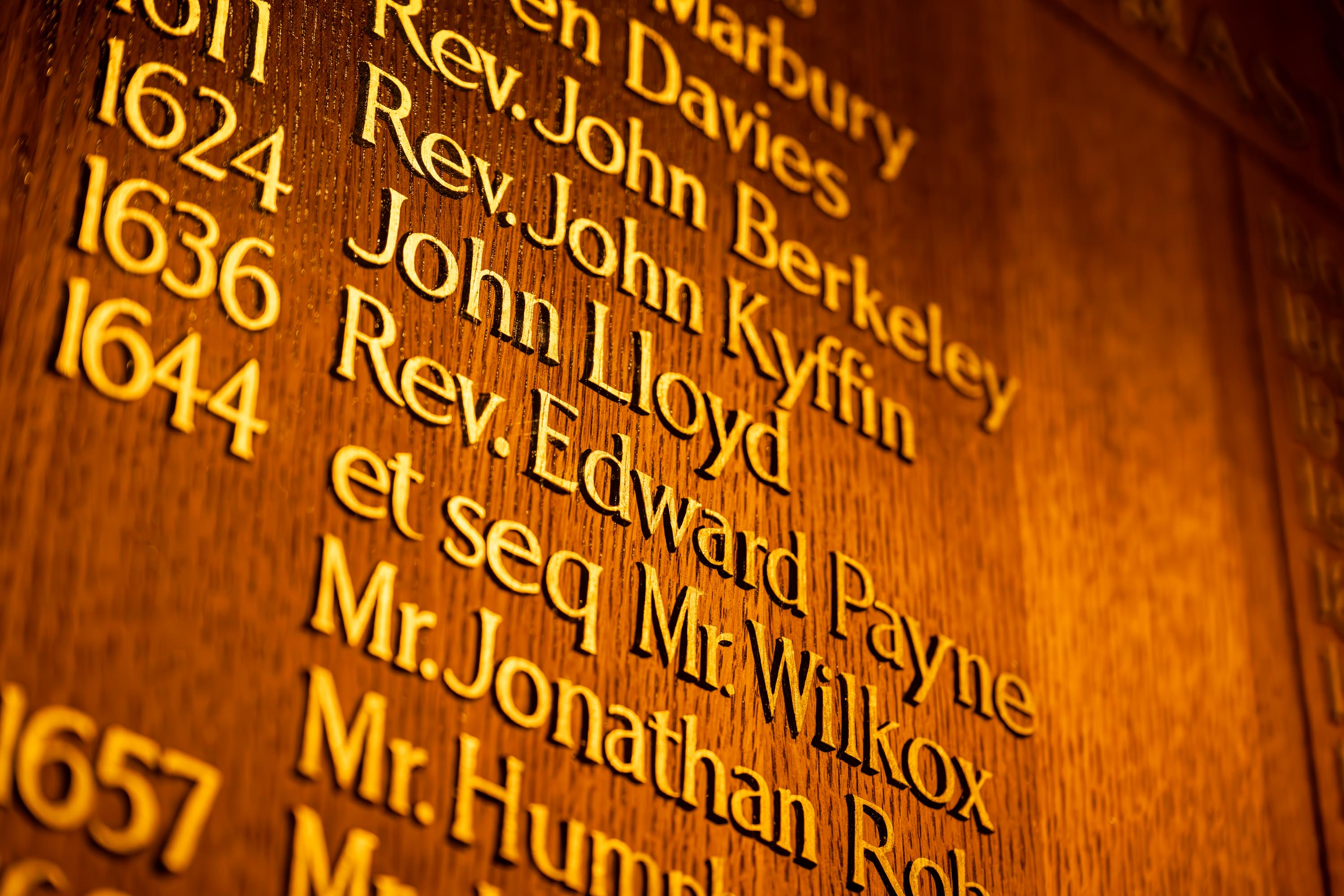
1644
Headmaster Rev Edward Payne is removed from his post by Oliver Cromwell accused of being a Royalist sympathiser. He is later reinstated as Headmaster in 1660 at the outset of the Reformation.
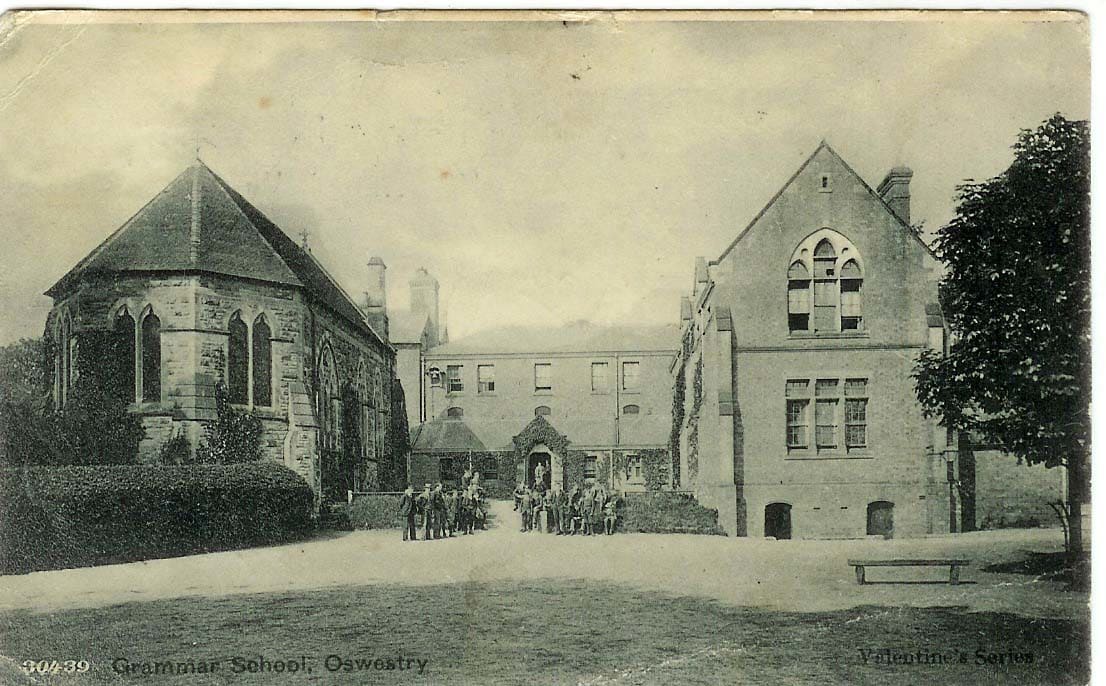
1776
Due to an increase in numbers, the school moves to the present Senior School site at Upper Brook Street adjacent to the Maes-y-Llan playing fields.
1863
The neo-Gothic Victorian school chapel is built, located adjacent to the rear of the original Georgian School House.
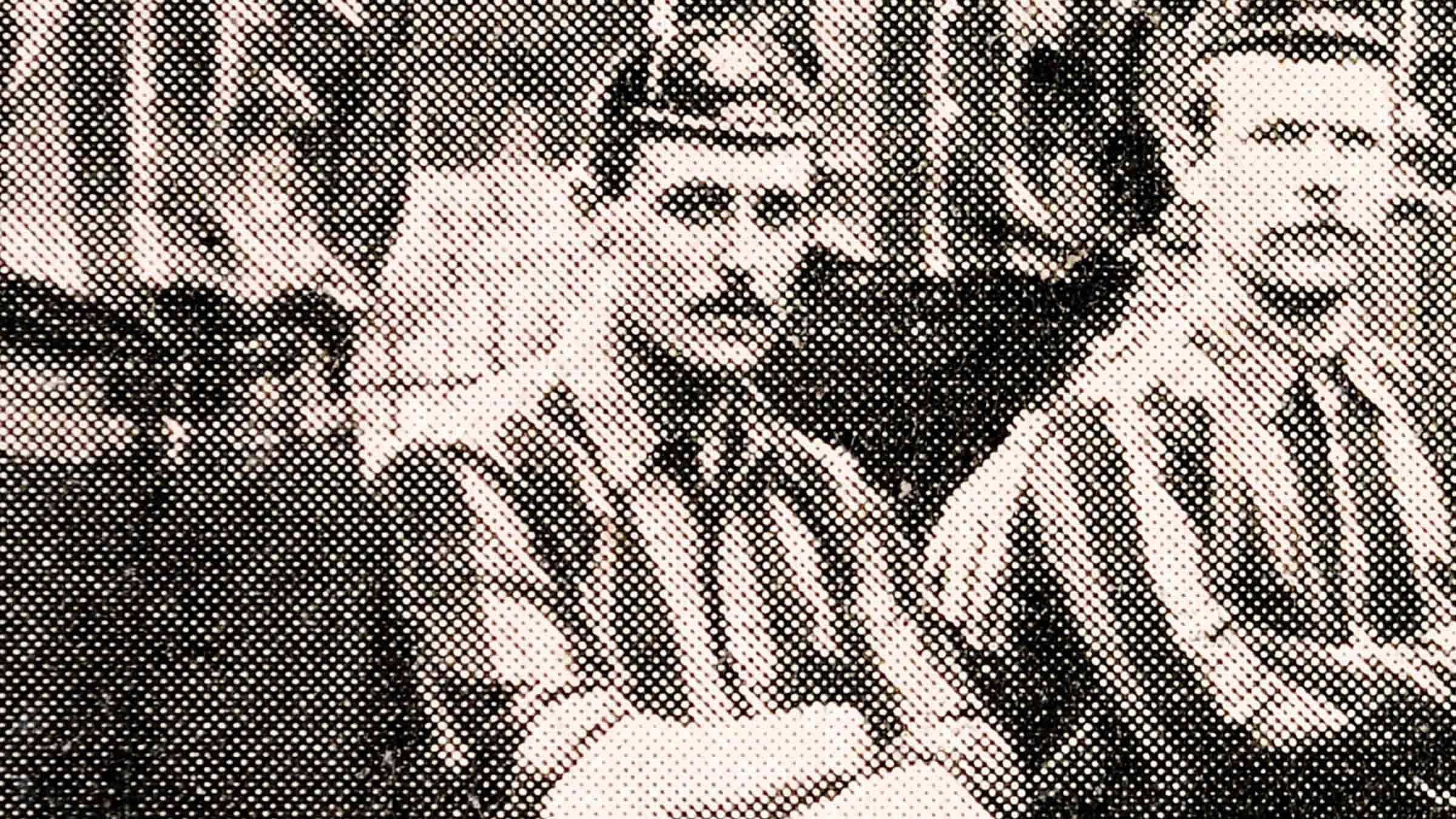
1893
Old Oswestrian Robert Topham gains his first England football cap and wins the FA Cup with his side Wolverhampton Wanderers.
1926
Old Oswestrian John Godfrey Parry-Thomas breaks the land speed record in his car ‘Babs’ at Pendine Sands, Wales.
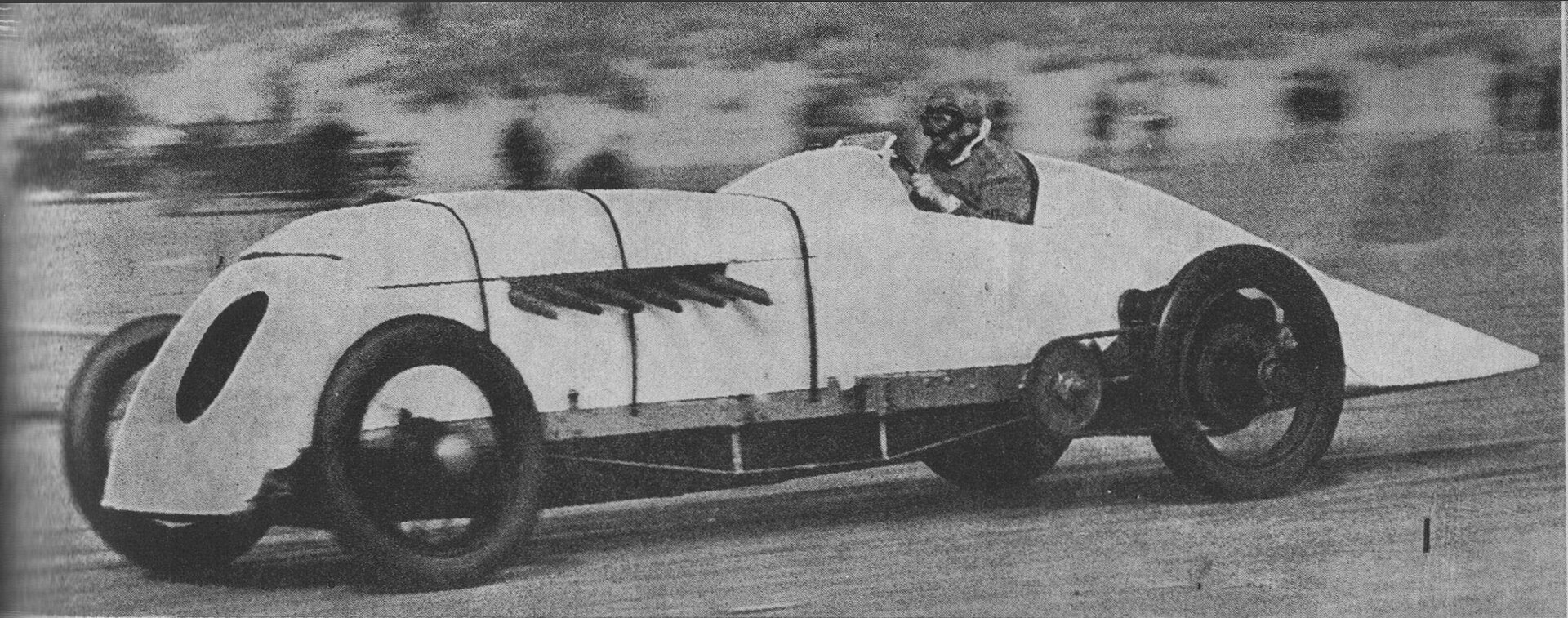
1971
With the admission of girls, Oswestry School is one of the very first Shropshire schools to become co-educational.
.png)
1973
The full-length statue of Winston Churchill is unveiled in Parliament Square, London, sculpted by Old Oswestrian artist Ivor Roberts-Jones.

1978
With Bellan House joining the family of schools, Oswestry becomes an all-through school educating girls and boys from age 4-18.
2007
Oswestry School celebrates its 600th anniversary.
2023
Launch of Forte, the Oswestry School 2030 Strategic Plan.
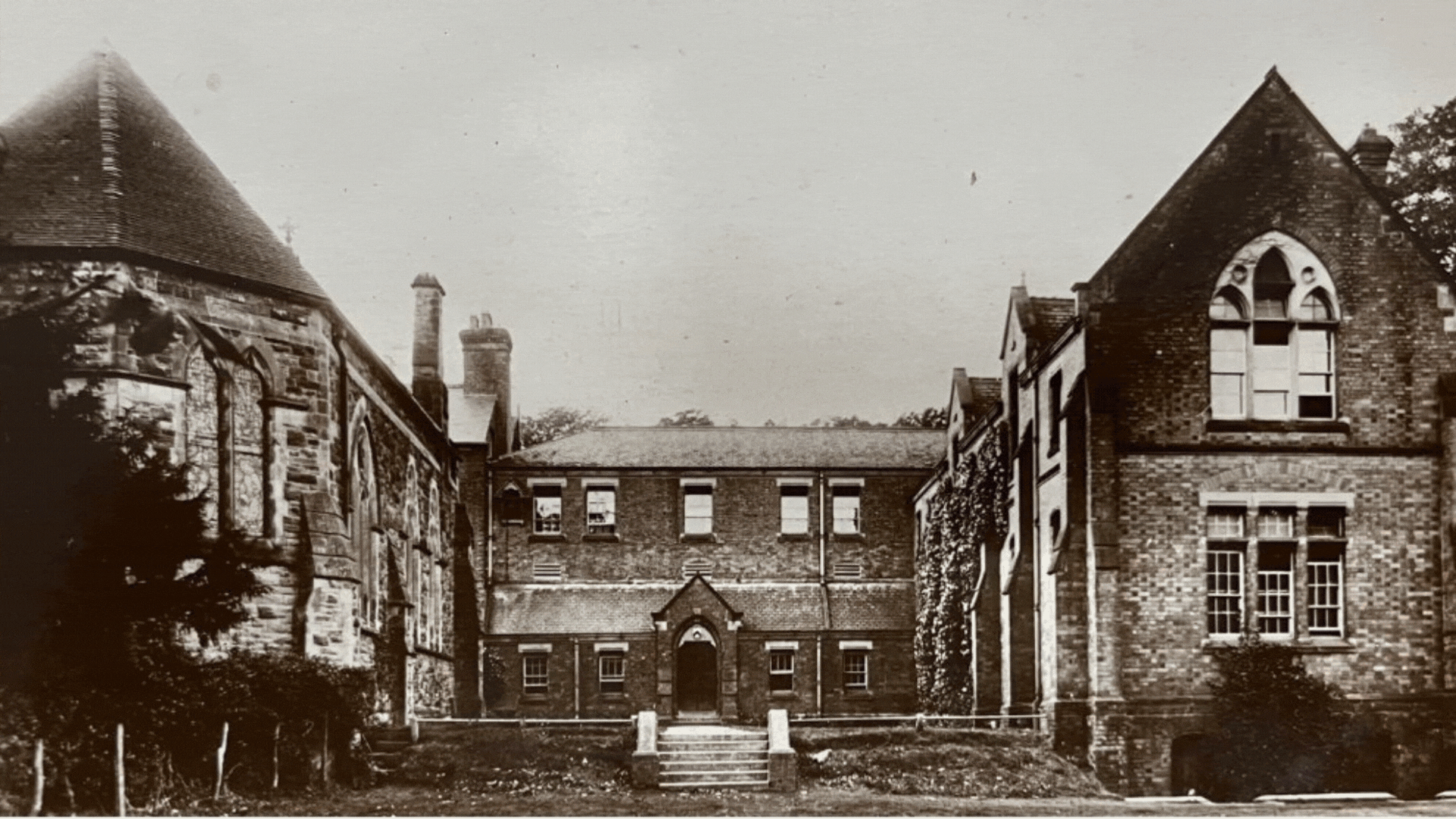
On the far-western edge of the Shropshire plain, nestling up against the foothills of the Welsh mountains, lies our school which, since its foundation over 600 years ago, in 1407, has taught generations of pupils in an unbroken sequence.
Not only is the antiquity of this establishment, Oswestry School, remarkable, but the nature of its founding too.
Unlike every earlier school (except one, Winchester College, founded some twenty years before), Oswestry was founded on a truly independent basis, having no connection to any ecclesiastical foundation, thereby earning it the title ‘Free’.
Read more from Chris Symons' 'OSWESTRY SCHOOL - A Commemorative History 1407 - 2007'Whilst not being anti-religious, its governance was in the hands of local non-clerical Trustees.
Its founder, a local wealthy landowner, lawyer and politician, David Holbache, together with his wife Guinevere, put into trust some lands, the rents from which would pay for a schoolmaster. This far-sighted man, friend of Owain Glyndwr and war treasurer for the newly crowned Henry IV, had the kind of vision and love of learning which characterized this early period of the Renaissance. Taking advantage of a gradual loosening of the restrictions imposed by the Feudal system, and perhaps hoping to heal some of the wounds and bitter feelings amongst the local people following such an unsettled period in the Marches region, Holbache’s new school made provision for the teaching of Latin, Greek and English grammar.
Established in the ancient half-timbered building close to the great Parish Church of St Oswald in 1407, the school would later attract the attention of such great names as Cromwell and Elizabeth I: the former dismissed the current headmaster for being a ‘delinquent’ (too ‘Royalist’) whilst the latter gave to the school an endowment of ‘forty shillings per annum’ to help with its running. Early archive records show that a small percentage of the subsidised school fees was set aside to pay for the pupil entertainment of those days – cockfighting!
Changes to the governance of the school in the mid-seventeenth century saw a gradual transition from the lay Trustees to a group of lay and clerical governors headed by the Bishop of St Asaph, who, from that time on, would appoint the Headmaster. Henceforth, these would be ordained men, a tradition which would extend into the twentieth century.
Increasing numbers in the mid eighteenth century meant a move for the school to its present site, on land next to the battlefield where, in 642 AD the Christian King Oswald was defeated by the pagan King Penda. The fine Georgian building, constructed in 1776 on land leased (and later bought) from a local aristocrat, still retains its original elegance, despite the additions of many other school buildings near it since. Its closest neighbour, the neo-Gothic Victorian chapel, built in 1863, stands looking across at St Oswald’s Maes-y-Llan battlefield, now the school’s extensive playing-fields.
Two world wars took their inevitable toll, but the school recovered and thrived. Ever-growing numbers saw the formation of a prep school, while a new boarding house was created following the purchase of the old Cottage Hospital, renamed ‘Holbache House’, recently replaced with the opening of an excellent new boarding house on the main campus.
A major change took place in 1972: with the admission of girls, the school became co-educational. Shortly after this, the local preparatory school, Bellan House, was taken over, thereby eventually allowing the school to offer education spanning the widest possible range – now 4 years up to 18.
Like most schools of its type, many of Oswestry School’s illustrious Old Boys entered the Church, Army or Foreign Civil Service.
Amongst many Old Oswestrians of note are Rev. Thomas Bray DD (founder of the Society for the Propagation of the Gospel): Edward Lhuyd (naturalist, botanist, linguist, geographer and antiquary): Bishop Humphrey Humphreys (who translated the Bible into Welsh): soldier, adventurer and writer Col Frederick Gustavus Burnaby: The Rev Canon William Archibald Spooner DD (Warden of New College, Oxford, of ‘Spoonerism’ notoriety): John Godfrey Parry Thomas (twice holder of the World Land Speed Record): Sir Charles Moses (general manager of the Australian Broadcasting Commission for 30 years), Ivor Roberts-Jones CBE RA (sculptor and portraitist whose most famous work is the, perhaps, definitive statue of Sir Winston Churchill in London's Parliament Square) and Sigi Faith (founder of Faith Shoes).
This remarkable foundation of David and Guinevere Holbache continues to flourish, over 600 years later. Its antiquity is a source of pride: the traditions, standards and collective wisdom, which the sheer longevity of Oswestry School has allowed to gather and mature, bring to the school ethos something unique – intangible, perhaps, but nevertheless very real and immensely valuable.
Whilst not being anti-religious, its governance was in the hands of local non-clerical Trustees.
Its founder, a local wealthy landowner, lawyer and politician, David Holbache, together with his wife Guinevere, put into trust some lands, the rents from which would pay for a schoolmaster. This far-sighted man, friend of Owain Glyndwr and war treasurer for the newly crowned Henry IV, had the kind of vision and love of learning which characterized this early period of the Renaissance. Taking advantage of a gradual loosening of the restrictions imposed by the Feudal system, and perhaps hoping to heal some of the wounds and bitter feelings amongst the local people following such an unsettled period in the Marches region, Holbache’s new school made provision for the teaching of Latin, Greek and English grammar.
Established in the ancient half-timbered building close to the great Parish Church of St Oswald in 1407, the school would later attract the attention of such great names as Cromwell and Elizabeth I: the former dismissed the current headmaster for being a ‘delinquent’ (too ‘Royalist’) whilst the latter gave to the school an endowment of ‘forty shillings per annum’ to help with its running. Early archive records show that a small percentage of the subsidised school fees was set aside to pay for the pupil entertainment of those days – cockfighting!
Changes to the governance of the school in the mid-seventeenth century saw a gradual transition from the lay Trustees to a group of lay and clerical governors headed by the Bishop of St Asaph, who, from that time on, would appoint the Headmaster. Henceforth, these would be ordained men, a tradition which would extend into the twentieth century.
Increasing numbers in the mid eighteenth century meant a move for the school to its present site, on land next to the battlefield where, in 642 AD the Christian King Oswald was defeated by the pagan King Penda. The fine Georgian building, constructed in 1776 on land leased (and later bought) from a local aristocrat, still retains its original elegance, despite the additions of many other school buildings near it since. Its closest neighbour, the neo-Gothic Victorian chapel, built in 1863, stands looking across at St Oswald’s Maes-y-Llan battlefield, now the school’s extensive playing-fields.
Two world wars took their inevitable toll, but the school recovered and thrived. Ever-growing numbers saw the formation of a prep school, while a new boarding house was created following the purchase of the old Cottage Hospital, renamed ‘Holbache House’, recently replaced with the opening of an excellent new boarding house on the main campus.
A major change took place in 1972: with the admission of girls, the school became co-educational. Shortly after this, the local preparatory school, Bellan House, was taken over, thereby eventually allowing the school to offer education spanning the widest possible range – now 4 years up to 18.
Like most schools of its type, many of Oswestry School’s illustrious Old Boys entered the Church, Army or Foreign Civil Service.
Amongst many Old Oswestrians of note are Rev. Thomas Bray DD (founder of the Society for the Propagation of the Gospel): Edward Lhuyd (naturalist, botanist, linguist, geographer and antiquary): Bishop Humphrey Humphreys (who translated the Bible into Welsh): soldier, adventurer and writer Col Frederick Gustavus Burnaby: The Rev Canon William Archibald Spooner DD (Warden of New College, Oxford, of ‘Spoonerism’ notoriety): John Godfrey Parry Thomas (twice holder of the World Land Speed Record): Sir Charles Moses (general manager of the Australian Broadcasting Commission for 30 years), Ivor Roberts-Jones CBE RA (sculptor and portraitist whose most famous work is the, perhaps, definitive statue of Sir Winston Churchill in London's Parliament Square) and Sigi Faith (founder of Faith Shoes).
This remarkable foundation of David and Guinevere Holbache continues to flourish, over 600 years later. Its antiquity is a source of pride: the traditions, standards and collective wisdom, which the sheer longevity of Oswestry School has allowed to gather and mature, bring to the school ethos something unique – intangible, perhaps, but nevertheless very real and immensely valuable.

